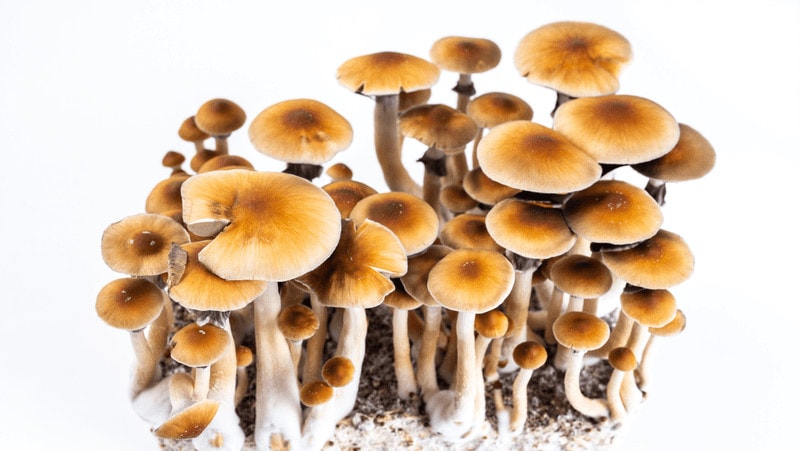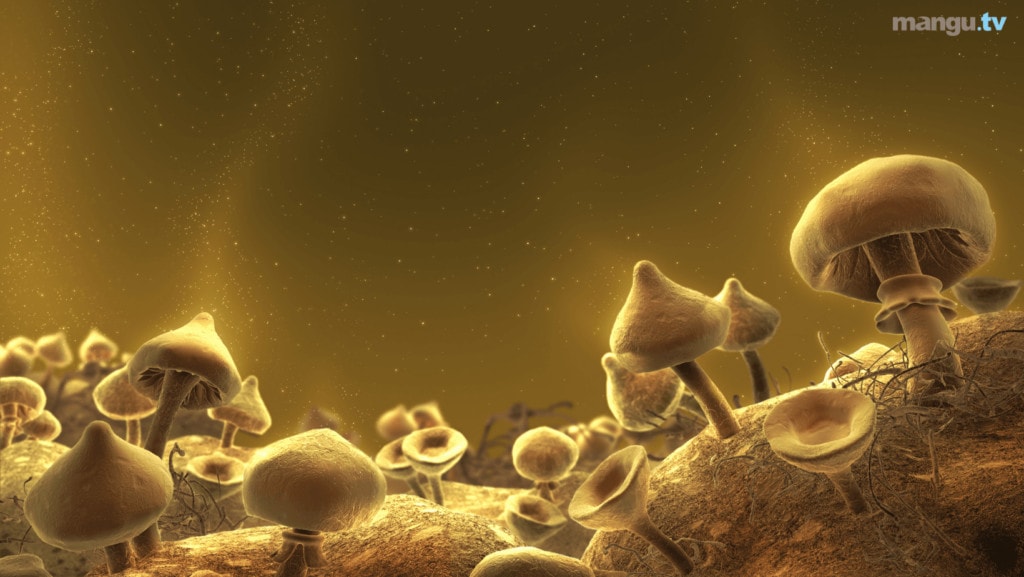Humans are such a unique species. Biologically, we are so closely related to the chimpanzee that we share 98.5% of our DNA. We both play, have complex emotions, and a very similar physical makeup. However, we are also different from our fellow primates, as well as the rest of the animal kingdom. We have much bigger brains relative to body size and in absolute size than other mammals. The size of our brains gives us an elevated intelligence which has many advantages, such as the ability to plan, cooperate and innovate new technology. Our evolved capacity for language and communication has made a tremendous impact on the formation of human societies.
The question is - How did the human brain triple in size in one and a half million years? What contributed to the evolution of human consciousness? While there are certainly many plausible theories out there, we aim to explore one in particular - The Stoned Ape Hypothesis.
The Stoned Ape Hypothesis was developed in 1992 by the botanist Terence McKenna and his brother Dennis McKenna. The theory postulates that our early ancestors consumed magic mushrooms they stumbled upon in the wild, whose discovery likely led to repeated consumption. This could have profoundly influenced the development of their brains and altered the course of our evolution. Neither Terence nor Dennis referred to this hypothesis by the name "Stoned Ape”. Nevertheless, the name has stuck, probably because it sounds very catchy.
A Trip to the Past
Let’s revisit the ancient times passed when our ancestors roamed the Earth. The now extinct Homo Erectus at some point abandoned the forests and began traveling across savannahs. It was our first relative to have human-like body proportions, shorter arms and longer legs relative to the torso. They were the longest lived of all human species.
Researchers have estimated their brain size to be 550 - 1250 cubic centimetres. Anthropologists think that their timeline overlapped with Homo Sapiens (the modern human) although precisely why and when they disappeared is unknown. As Homo Erectus covered new ground foraging for food, they evolved at an accelerated pace, and their brains tripled in size. The question remains - how did their brains evolve so fast? That’s where The Stoned Ape Hypothesis offers some unique insights.
Psychedelic Snacktime
“As early humans, we ate our way to higher consciousness by consuming these mushrooms. Psilocybin brought us out of the animal mind and into the world of articulated speech and imagination”.
In the book “Food of the Gods”, Terence presents The Stoned Ape Hypothesis - the hypothesis that consumption of psychedelic mushrooms could have profoundly changed the brains of our ancestors. We know for a fact that hominids across all ages discovered that certain plants, upon ingestion can diminish pain, suppress appetite, boost immunity against pathogens, and elevate energy levels.
Our ancestors likely followed herds of cows as well as other herbivores, as they would have easily become dependent on them for food and clothing. Psychedelic mushrooms grew readily on cow dung. Consuming them on a regular basis could have proven advantageous as humans spread out into new territory.
The Cubensis Effect

We now know that magic mushrooms open the floodgates of information flow to the brain, inducing synesthesia. Synesthesia is a perceptual phenomenon in which stimulation of one sensory or cognitive pathway leads to involuntary experiences in a secondary pathway. In his book, McKenna asserts that low doses of psilocybin improve visual acuity which could have had a tremendous effect on Homo Erectus’ hunting ability. In higher doses, mushrooms could have acted as an aphrodisiac, increasing sex drive. Mushrooms also tend to “dissolve boundaries,” as McKenna puts it, enhancing closeness, community ties and potentially even encouraging group sexual activities.
Neurologically, the result of the effect of psilocybin on the primitive brain was likely a rapid reorganization of how information was processed. This could have been the cataylst of the rapid cognitive evolution that paved the way for early art, language and tools found in Homo sapiens’ archeological record.
Ancient Allies
We know for a fact that many societies of humans consumed psychedelics, and that they have been used in religious rituals and rites. There is mention of consumption of some magical plant in the Zoroastrian religion, while the Vedas speak about “Soma”, a ritual drink made by extracting juice from a plant thought to produce immortality. It is plausible to think that before they could write about it, our ancestors also consumed psychedelic plants. These plants have pushed so many of us to reach new heights of personal evolution that it seems entirely plausible that they had a pretty profound effect on the evolution of early humans and those who came before them.
In Conclusive Thought
Even though we may never be able to prove or disprove The Stoned Ape Hypothesis, it is a compelling idea that could help us understand more about our origins as a species as well as the evolution of human consciousness.
“It’s not so simple to say that they ate psilocybin mushrooms and suddenly the brain mutated, I think it’s more complex than that, but I think it was a factor. It was like a software to program this neurologically modern hardware to think, to have cognition, to have language—because language is essentially synesthesia. Language is the association with apparently meaningless sound except that it’s associated with the complex of meaning.” -Dennis McKenna
References:
“Food of The Gods: The Search for Original Tree of Knowledge” by Terence McKenna - https://www.goodreads.com/book/show/51660.Food_of_the_Gods
Fantastic Fungi https://fantasticfungi.com/
